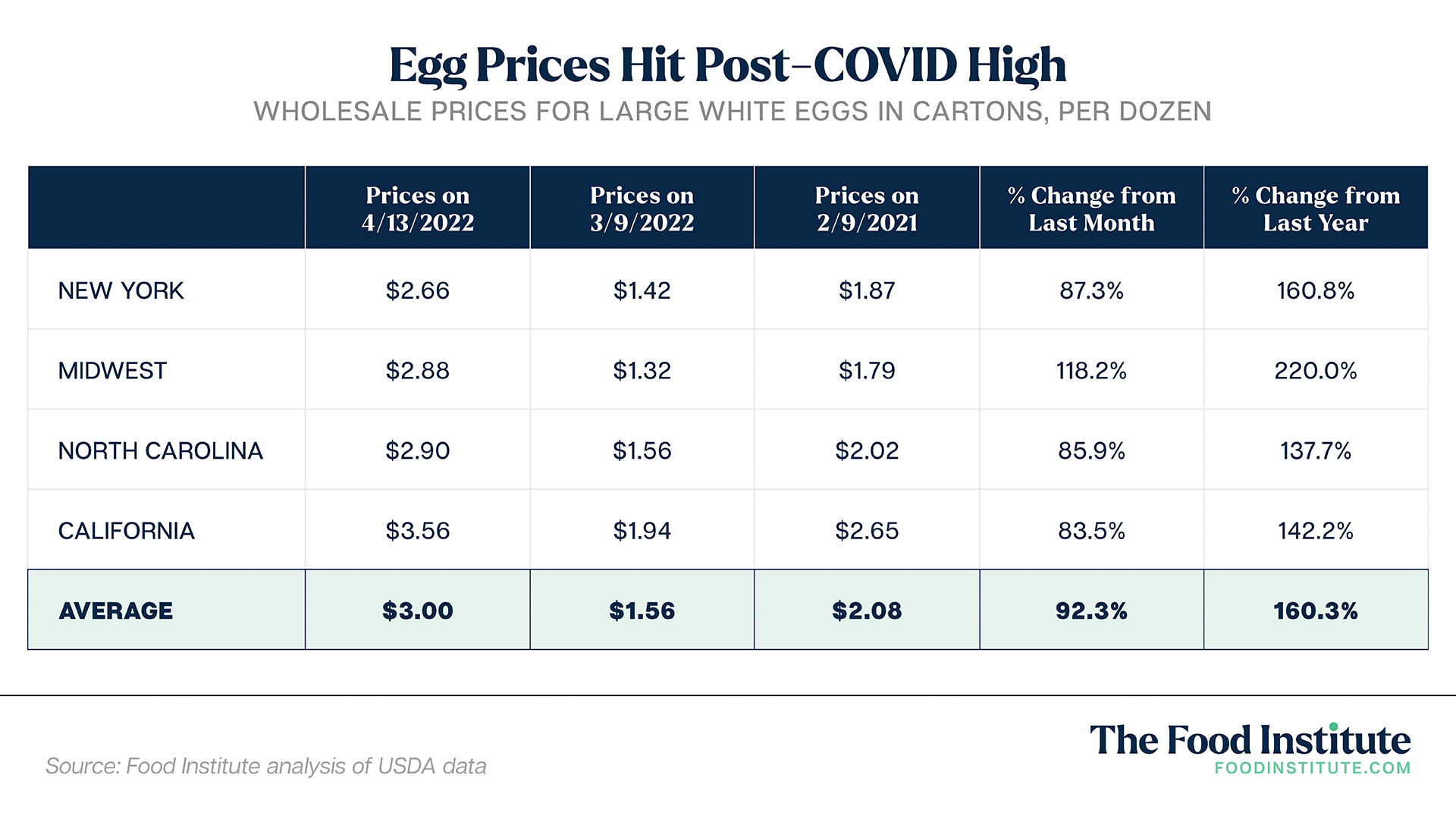Egg Prices Plummet: Dozen Now $5 After Record Highs

Table of Contents
Factors Contributing to the Egg Price Drop
Several key factors have contributed to the recent significant decrease in egg prices, offering relief to both consumers and businesses that rely on eggs as an ingredient.
Reduced Avian Flu Impact
The highly pathogenic avian influenza (HPAI) outbreaks that ravaged poultry flocks across the country in 2022 significantly impacted egg production, leading to drastically reduced supply and soaring egg prices. However, the impact of avian flu has thankfully decreased considerably.
- Reduced infected flocks: The number of confirmed HPAI outbreaks in commercial and backyard poultry flocks has significantly declined in recent months, allowing the poultry industry to recover. This means more hens are laying eggs, increasing overall supply.
- Improved biosecurity measures: The industry has implemented stricter biosecurity measures to prevent future outbreaks, which will contribute to the long-term stability of egg production.
- Recovery of egg-laying capacity: Many farms that suffered losses due to HPAI have rebuilt their flocks, contributing to the increased egg supply and subsequent price decrease.
Increased Egg Production
The reduction in avian flu cases has paved the way for an increase in overall egg production. Farmers have been expanding their flocks and adopting improved farming techniques to boost output.
- Expansion of poultry farms: Many farmers, seeing the demand for eggs, have invested in expanding their operations, leading to a noticeable increase in egg laying capacity.
- Improved farming techniques: Advancements in poultry farming, including better feed management and improved housing conditions, have resulted in higher egg yields per hen.
- New high-yielding breeds: The introduction of new chicken breeds known for their high egg-laying capacity further contributes to the increased supply.
Reduced Consumer Demand
The exceptionally high egg prices of the past year impacted consumer behavior. Facing inflation and rising food costs, many consumers adjusted their shopping habits.
- Shift to alternative proteins: Consumers sought out more affordable protein sources like beans, lentils, and tofu, leading to a decrease in overall egg demand.
- Reduced egg consumption: Many households reduced their egg consumption, opting for fewer eggs per week or substituting them in recipes.
- Impact of general inflation: The overall impact of inflation on consumer spending power significantly reduced discretionary spending on higher-priced goods, including eggs.
Current Egg Prices and Regional Variations
While the national average price for a dozen eggs has dropped to approximately $5, regional variations still exist.
National Average vs. Regional Differences
The price of a dozen eggs varies significantly across different regions of the country. Several factors influence these regional discrepancies.
- Local production: States with a higher concentration of egg farms often have lower prices due to reduced transportation costs.
- Transportation costs: Regions further from major egg-producing areas tend to experience higher prices due to increased shipping expenses.
- Local market dynamics: Local market demand and supply also play a crucial role in price fluctuations.
(Insert table here showing price variations across different regions, if data is available)
Comparison to Previous Record Highs
The current price of eggs represents a significant drop from the record highs seen earlier this year.
- (Insert chart or graph here visually demonstrating the price fluctuations over time, showing the percentage decrease.)
- Percentage decrease: The current price represents a [insert percentage]% decrease from the peak price.
What Does This Mean for Consumers and the Future of Egg Prices?
The recent drop in egg prices is undoubtedly good news for consumers, but it's crucial to consider both short-term and long-term implications.
Short-Term Outlook
The short-term outlook for egg prices remains somewhat uncertain. Several factors could influence future price movements:
- Potential future outbreaks of avian flu: Any resurgence of avian flu could quickly disrupt supply and push prices back up.
- Changes in feed costs: Fluctuations in the cost of chicken feed, a major expense for egg producers, can directly impact egg prices.
- Overall economic conditions: General economic factors, such as inflation and consumer spending habits, will continue to influence demand and, consequently, prices.
Long-Term Implications for the Egg Industry
The recent price volatility highlights the fragility of the egg industry and its vulnerability to unforeseen events.
- Adjustments in farming practices: Egg producers are likely to continue investing in improved biosecurity measures and farming techniques to mitigate future risks.
- Changes in consumer habits: Consumer preferences and purchasing patterns might shift permanently, potentially impacting long-term demand.
- Impact on the overall food industry: Fluctuations in egg prices influence the pricing of many processed foods that use eggs as ingredients.
Conclusion
The dramatic drop in egg prices from record highs is largely due to a decline in avian flu outbreaks, increased egg production, and reduced consumer demand driven by inflation. Currently, a dozen eggs averages around $5, although regional variations exist. While the short-term outlook remains somewhat uncertain, this price decrease offers considerable relief to consumers. Stock up on affordable eggs now and enjoy delicious and cheap egg dishes! Find inspiring egg recipes and grocery store deals at [link to relevant resources].

Featured Posts
-
 Ufc Veteran Analyzes The Paddy Pimblett Vs Michael Chandler Fight
May 15, 2025
Ufc Veteran Analyzes The Paddy Pimblett Vs Michael Chandler Fight
May 15, 2025 -
 Investigation Water Contamination Affecting Township Residents
May 15, 2025
Investigation Water Contamination Affecting Township Residents
May 15, 2025 -
 Situatsiya Na Kipre Perspektivy Vyvoda Turetskikh Voysk Haqqin Az
May 15, 2025
Situatsiya Na Kipre Perspektivy Vyvoda Turetskikh Voysk Haqqin Az
May 15, 2025 -
 As Baseball News Muncys Debut At Second Base
May 15, 2025
As Baseball News Muncys Debut At Second Base
May 15, 2025 -
 A Master Sergeants Grief The Human Cost Of Military Discharge
May 15, 2025
A Master Sergeants Grief The Human Cost Of Military Discharge
May 15, 2025
